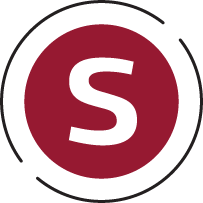
Stamats Insights
August 1, 2019

Riding the building wave of podcasting is a simple and often very low-cost strategy to create engagement with clients, potential clients, members of professional associations and others who may be interested in your organization. The growth of podcasts is undeniable.
One-quarter of Americans listen to podcasts weekly, and nearly four times more people listen to podcasts every week than watched the Game of Thrones season premiere, according to Edison Research.
Podcast advertising revenue topped $479 million in 2018 and is expected to exceed $1 billion by 2021, according to research from IAB/PWC.
“It’s the most intimate form of media. Since people typically use earphones it’s like you’re whispering in their ears,” said Mike McAllen, a veteran meetings and association industry podcaster and director of Podcasting4Associations.com. “It’s a great new way to entertain, engage and educate your target audience, and also create new revenue streams. There’s a very low-cost barrier of entry for podcasting, with a lot of free software to produce podcasts and good microphones often costing less than $50.”
McAllen created a lengthy list of resources, such as the cost for equipment and software, for those interested in starting a podcast.
McAllen provided the following description of what a podcast is:
Podcasting is a service that allows Internet users to pull audio files (typically MP3s) from a podcasting website to listen to on their computers or personal digital audio players. This is done by RSS, which simply means Real Simple Syndication—or a subscription.
The term comes from a combination of the words iPod (a personal digital audio player made by Apple) and broadcasting.
Before launching a podcast, budding broadcasters should consider the following:
There is a wide variety of ways to research, listen and post podcasts, including:
A very simple way to create a podcast at conferences is to arrange through the audiovisual provider to plug a digital recorder into their soundboard during presentations, and then offer the recording as part of a podcast series from the event.
Another conference podcast option is to offer an exhibit hall stage or a recording booth at the show where attendees and/or sponsors can record podcasts.
This option could also be an opportunity to sell branding sponsorships and include a live audience.
There are a number of important details to consider when developing, recording and broadcasting a podcast:
1. A podcast needs to sound great. Make sure you have high-quality, clean sound files.
2. Find a quiet place, if possible. Environments such as trade shows or conferences can provide a lot of audio distractions that can find their way onto your recording, such as attendee conversations, public address system announcements and music, and even noise from show-floor equipment such as maintenance equipment and coffee/espresso machines.
3. Work with an AV company, if possible, and reach out to them before the event to secure a key point of onsite contact and see if you can plug into their soundboard, if necessary.
4. Find out what resonates to your audience and focus in on it. Storytelling, industry news and event-based recordings are all viable options.
5. Before launching your podcast, develop a list of 20 people you want to interview, along with 20 topics. Make sure to discuss the topic you will cover with them before you hit the “record” button, and also make sure to research the topic thoroughly yourself in advance.
6. Get your listeners involved: Mention subscribers to your podcast during the broadcast if relevant.
7. Respect your listeners’ time by getting to the point and delivering what you promise in the promotional/descriptive copy associated with the podcast.
8. Obtain editing software and do a thorough edit of the podcast before broadcasting. Consider adding interesting elements such as non-copyright-restricted music and sound effects.
9. Consider setting up your podcasts into seasons, and/or batch them according to the topics they cover.
10. Develop a regular schedule for releasing your podcast, such as weekly, bi-weekly or monthly. Subscribers will anticipate the day that the podcast will become available and look forward to it.
11. Consider recording and adding “calls to action” during each podcast and rotate them through your shows, such calls to subscribe (very important), the opportunity to buy a product or referencing where listeners can discover more information about podcast sponsors.
12. Interview other podcasters in your space, as they may reciprocate by inviting you on their podcast, which will drive interest.
13. Sponsors can be mentioned in a pre-roll or end-roll, with a mid-roll sponsorship message typically generating the most revenue.
14. You can also sell interview opportunities to sponsors, but continually reinforce that the podcast cannot be a “sales pitch,” which will immediately turn off your audience and damage your brand.
15. Taking the time to transcribe each podcast will help generate more search engine optimization (SEO) benefits, so while it can take a lot of labor, it may be worth the time investment to create much more visibility and traffic.
While podcasting is growing exponentially both in listener traffic and revenue generation, it is still a developing landscape, so take some risks and make sure to analyze what works and what doesn’t, and then make adjustments.
“This is the Wild West of podcasting,” McAllen said, “so find what resonates with your audience, jump in and start swimming.”
Ready to Get Started?
Reach out to us to talk about your strategy and goals.